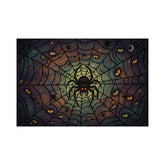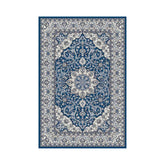Digital Printing Carpet Quality
Digital Printing Carpet Quality
Digital printing has revolutionized the carpet industry, offering a level of customization and quality that traditional methods simply cannot match. The ability to produce intricate designs, vibrant colors, and personalized patterns has made digital printing a preferred choice for both residential and commercial applications. As consumers increasingly seek unique flooring solutions that reflect their individual tastes and styles, understanding the quality of digital printing on carpets becomes paramount.
This quality is not merely a function of the printing technology used; it encompasses a range of factors including the materials, processes, and maintenance practices involved. The quality of digitally printed carpets can significantly influence their aesthetic appeal and longevity. High-quality digital prints can transform a space, adding character and warmth, while poor-quality prints may detract from the overall design.
As such, it is essential for consumers, designers, and manufacturers alike to grasp the nuances of digital printing technology and its implications for carpet quality. This article delves into the intricacies of digital printing on carpets, exploring the processes involved, the factors that affect quality, and the importance of material selection. Check out our amazing selection of Custom Rugs for your home decor needs.
Understanding the Process of Digital Printing on Carpets
Digital printing on carpets involves a sophisticated process that begins with the design phase. Designers create intricate patterns using graphic design software, which are then translated into digital files. These files are sent to specialized printers that utilize inkjet technology to apply the design directly onto the carpet substrate.
Unlike traditional methods such as tufting or weaving, which require extensive setup and can be limited in design flexibility, digital printing allows for rapid prototyping and production of complex designs. The actual printing process typically involves several steps. First, the carpet material is prepared, often requiring pre-treatment to ensure optimal ink adhesion.
Next, the digital printer applies the ink in layers, allowing for precise control over color saturation and detail. After printing, the carpet may undergo a finishing process that includes heat setting or applying protective coatings to enhance durability and stain resistance. This combination of technology and technique enables manufacturers to produce carpets that not only meet aesthetic demands but also perform well in various environments.
Factors Affecting the Quality of Digital Printing on Carpets
Several factors play a crucial role in determining the quality of digital printing on carpets. One of the most significant is the type of ink used in the printing process. Water-based inks are commonly employed due to their eco-friendliness and low levels of volatile organic compounds (VOCs).
However, pigment-based inks can offer superior color vibrancy and fade resistance, making them a popular choice for high-end applications. The choice of ink directly impacts not only the visual quality but also the durability and longevity of the printed design. Another critical factor is the substrate material itself.
Carpets can be made from various fibers such as nylon, polyester, or wool, each with distinct characteristics that affect how well they accept ink. For instance, nylon is known for its resilience and ability to hold color well, while polyester offers excellent stain resistance but may not achieve the same level of vibrancy. Additionally, the texture and density of the carpet can influence how ink is absorbed and how colors appear once printed.
Understanding these variables is essential for achieving high-quality results in digital carpet printing.
Importance of Choosing the Right Materials for Digital Printing on Carpets
Selecting appropriate materials is fundamental to achieving high-quality digital prints on carpets. The choice of fiber not only affects the aesthetic outcome but also influences performance characteristics such as durability, stain resistance, and maintenance requirements. For example, nylon carpets are often favored in commercial settings due to their strength and ability to withstand heavy foot traffic without showing wear.
In contrast, wool carpets may be chosen for residential applications where luxury and comfort are prioritized. In addition to fiber selection, backing materials also play a vital role in carpet performance. The backing provides structural support and stability to the carpet while also affecting its overall feel underfoot.
A high-quality backing can enhance durability and prevent issues such as curling or wrinkling over time. Furthermore, advancements in backing technology have led to options that improve moisture resistance and reduce mold growth, making them suitable for various environments including basements or areas prone to humidity.
Evaluating the Durability of Digital Printing on Carpets
Durability is a key consideration when assessing the quality of digitally printed carpets. The longevity of a carpet is influenced by several factors including the type of ink used, the quality of the substrate, and the environmental conditions it will be exposed to. High-quality inks that are resistant to fading and wear can significantly extend the life of a printed carpet.
For instance, UV-resistant inks are particularly important in spaces with direct sunlight exposure, as they help prevent color degradation over time. Moreover, the construction method of the carpet also impacts its durability. Carpets that are tightly woven or tufted tend to withstand wear better than those with looser constructions.
Additionally, proper maintenance practices play a crucial role in preserving carpet quality over time. Regular cleaning and prompt attention to spills can prevent staining and prolong the life of both the carpet fibers and printed designs.
Examining the Color Fastness and Fade Resistance of Digital Printing on Carpets
Color fastness is an essential aspect of digital printing quality that refers to how well colors retain their vibrancy over time when exposed to various environmental factors such as light, moisture, and cleaning agents. In digital carpet printing, achieving high color fastness is critical for maintaining aesthetic appeal throughout the carpet's lifespan. Factors such as ink formulation and substrate compatibility play significant roles in determining color fastness.
Fade resistance is particularly important in areas with high foot traffic or exposure to sunlight. Carpets placed near windows or in outdoor settings are more susceptible to fading due to UV radiation. To combat this issue, manufacturers often utilize UV-stabilized inks that are designed to withstand prolonged exposure to sunlight without significant color loss.
Additionally, testing for color fastness against industry standards helps ensure that carpets will maintain their intended appearance even after years of use.
Assessing the Detail and Resolution of Digital Printing on Carpets
One of the standout features of digital printing technology is its ability to produce high-resolution images with remarkable detail. This capability allows for intricate designs that can include fine lines, gradients, and complex patterns that would be challenging or impossible to achieve with traditional methods. The resolution of a digital print is typically measured in dots per inch (DPI), with higher DPI values indicating greater detail.
When evaluating detail and resolution in digitally printed carpets, it is essential to consider both the printer's capabilities and the design itself. Advanced printers can achieve resolutions upwards of 1200 DPI, resulting in crisp images that retain clarity even at close range. However, achieving high detail also depends on the quality of the original design file; low-resolution images will not translate well into high-quality prints regardless of printer capabilities.
Therefore, collaboration between designers and manufacturers is crucial for ensuring that final products meet expectations for detail and visual impact.
Comparing Different Types of Digital Printing Technologies for Carpets
The landscape of digital printing technologies for carpets includes several methods, each with its own advantages and limitations. One common technology is dye-sublimation printing, which involves transferring dye onto synthetic fibers through heat application. This method allows for vibrant colors and excellent penetration into fibers but is typically limited to polyester substrates.
Another popular method is inkjet printing, which uses liquid inks applied directly onto carpet surfaces. Inkjet technology offers versatility in terms of substrate compatibility and design complexity but may require additional treatments for durability and stain resistance. Additionally, some manufacturers employ hybrid systems that combine both dye-sublimation and inkjet techniques to leverage the strengths of each method.
When comparing these technologies, considerations such as production speed, cost-effectiveness, and desired print quality come into play. For instance, dye-sublimation may be more suitable for large-scale production runs where vibrant colors are essential, while inkjet may be preferred for custom designs requiring intricate details.
Exploring the Environmental Impact of Digital Printing on Carpets
As sustainability becomes an increasingly pressing concern across industries, understanding the environmental impact of digital printing on carpets is essential. Traditional carpet manufacturing processes often involve significant waste generation and chemical usage; however, digital printing offers several advantages in this regard. The precision of digital technology allows for reduced material waste since designs can be printed directly onto substrates without excess fabric being cut away.
Moreover, many manufacturers are now adopting eco-friendly inks that minimize harmful emissions during production. Water-based inks are particularly popular due to their lower VOC content compared to solvent-based alternatives. Additionally, advancements in recycling technologies have enabled some companies to reclaim used carpets and repurpose them into new products, further reducing environmental impact.
However, challenges remain in ensuring that all aspects of carpet production align with sustainable practices. From sourcing raw materials responsibly to implementing energy-efficient manufacturing processes, a holistic approach is necessary to minimize environmental footprints throughout the entire lifecycle of digitally printed carpets.
Tips for Maintaining the Quality of Digital Printed Carpets
To ensure that digitally printed carpets retain their quality over time, proper maintenance practices are essential. Regular vacuuming is one of the simplest yet most effective ways to keep carpets looking fresh; it removes dirt and debris that can cause wear over time. For high-traffic areas or homes with pets, more frequent vacuuming may be necessary to prevent dirt buildup.
In addition to regular cleaning routines, addressing spills promptly can prevent stains from setting in. Blotting spills with a clean cloth rather than rubbing them can help lift stains without damaging fibers or prints. For deeper cleaning needs, professional carpet cleaning services equipped with appropriate techniques for digital prints can help maintain appearance without compromising quality.
Furthermore, protecting carpets from direct sunlight can mitigate fading issues associated with UV exposure. Utilizing window treatments or strategically placing furniture can help shield carpets from harsh light while still allowing natural illumination into spaces.
The Future of Digital Printing on Carpets
The future of digital printing on carpets appears promising as technology continues to evolve and consumer preferences shift towards customization and sustainability. Innovations in printing techniques are likely to enhance color vibrancy and detail resolution further while reducing environmental impacts associated with traditional manufacturing methods. As awareness grows regarding the benefits of digital printing—such as reduced waste generation and increased design flexibility—more manufacturers may adopt these technologies as standard practice.
This shift could lead not only to improved product offerings but also foster greater collaboration between designers and manufacturers in creating unique flooring solutions tailored to individual needs. In summary, understanding digital printing carpet quality encompasses a multifaceted exploration of processes, materials, durability factors, color fastness, detail resolution technologies, environmental impacts, maintenance practices—and ultimately shapes how consumers experience their spaces through beautifully crafted carpets.
FAQs
What is digital printing carpet quality?
Digital printing carpet quality refers to the overall standard of carpets that have been produced using digital printing technology. This includes factors such as color vibrancy, image clarity, durability, and overall appearance.
How does digital printing affect carpet quality?
Digital printing technology allows for more intricate and detailed designs to be printed onto carpets, resulting in higher quality and more visually appealing products. It also enables a wider range of colors to be used, leading to more vibrant and realistic designs.
What factors contribute to high-quality digital printing carpets?
Factors that contribute to high-quality digital printing carpets include the type of printing technology used, the quality of the materials and dyes, the resolution of the printing process, and the expertise of the manufacturer.
What are the benefits of digital printing for carpet quality?
Digital printing offers benefits such as the ability to create custom designs, faster production times, reduced waste, and the ability to produce small batch runs. It also allows for more intricate and detailed patterns to be printed, resulting in higher quality carpets.
How can I determine the quality of a digital printing carpet?
You can determine the quality of a digital printing carpet by examining factors such as the clarity and sharpness of the design, the richness and accuracy of the colors, the feel and durability of the carpet fibers, and the overall craftsmanship of the product.









